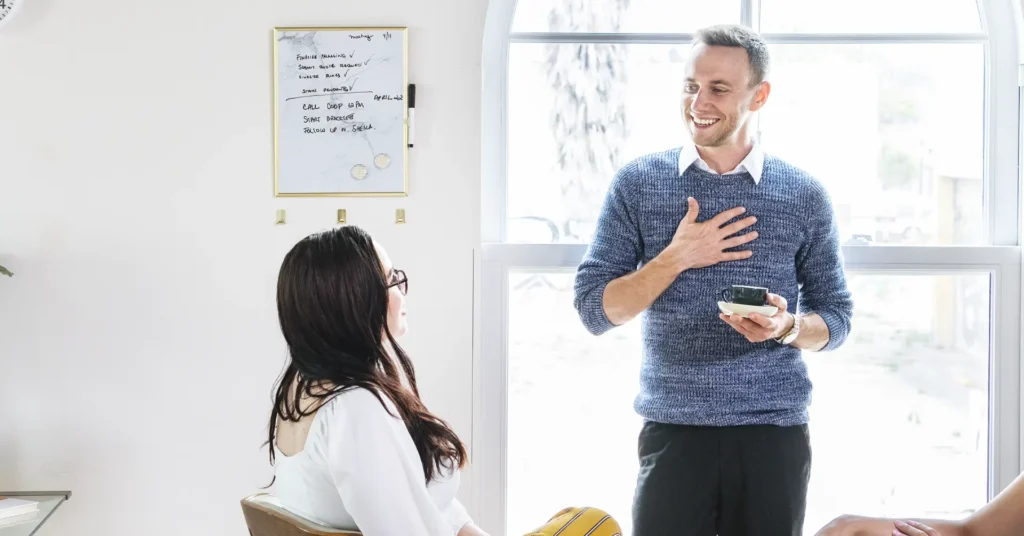If you’re looking to reduce anxiety, we’re here to help. Anxiety can range from an occasional worry or concern that everyone experiences, to more severe anxiety or even an anxiety disorder. Whichever end of the spectrum you find yourself, having quick and simple techniques ready to use can help you get through those difficult moments. You will find that some techniques work better than others for you. They may not feel so easy at first, but remember they will become more effective with time and practice.
What Happens When You Experience Anxiety
Anxiety produces a stress response in the body. This activates your fight or flight system. Causing an increase in heart rate, and released adrenaline. Essentially everything speeds up. Your body is getting ready to run away. Or act out to protect itself from danger. Of course, this is helpful when there’s an imminent threat. But quite often it’s a false alarm, however we’re still left with very difficult feelings, thoughts, and sensations to manage.
Tip 1: Reduce Anxiety With Paced Breathing
Regulating your breath can be an effective way of reducing the physical sensations of anxiety. It works by decreasing our heart rate and slowing the body down, which can reverse anxiety symptoms.
Here are 4 steps to trying paced breathing. It’s really simple.
- Take a slow, deep breathe in to the count of 5
- Hold the breath for a moment (a second or two will do!)
- Exhale slowly to the count of 7
- Repeat for 5 – 10 breaths.
Give it a try now and see how it feels.
Tip 2: Reduce Anxiety With Muscle Relaxation
Often anxiety can affect us by causing tension in different parts of the body. Using a muscle relaxation technique can help combat this tension.
How To Use Muscle Relaxation
- Start with your hands. Squeeze your hands into firsts by closing them up really tight while taking a breath in.
- Then slowly exhale while gently relaxing all the muscles in your hands.
- Repeat 5 – 10 times (or as much as you feel’s needed).
- Next, move onto your shoulders. Hunch up your shoulders, pull them close your ears while breathing in.
- Then as you exhale out, slowly relax all the muscles in your shoulder, neck and upper back.
- Repeat 5 – 10 times (or as much as you feel’s needed).
- Lastly, move onto your face. Gently screw up your face, close your eyes while inhaling.
- Then, while breathing out, relax all the muscles in your face.
- Repeat 5 – 10 times (or as much as you feel’s needed).
- Take a deep breathe in and out to finish.
Tip 3: Reduce Anxiety With Distraction Techniques
Directing your attention to something other than your anxiety or worries that you’re experiencing can help calm anxiety. Immersing yourself in another activity, either physical or mental can act as effective distraction techniques. Or put simply, any safe activity that’ll refocus your attention can help reduce feelings of anxiety.
Activities To Help Distract You From Anxiety
- Focus on counting backwards from 100
- Solve a crossword puzzle
- Exercise or go for a walk
- Listen to some relaxing music
- Play a game or speak to a friend
If a certain activity really helped, note it down somewhere! This will leave you with a list of activities that you can use if you’re feeling anxious in the future.
Tip 4: Checking The Facts
It can be helpful to understand the cause of your anxiety. It’s worth asking yourself if there’s a genuine threat. Checking the facts will help you realise if your thoughts are reasonable given the situation. Often anxieties can be based around irrational fears. Or imagining worst-case scenarios. It can also be helpful to remember these are just thoughts and not facts. Consider asking yourself “what you would say to a friend if they were going through a similar situation?”
Tip 5: Problem Solve The Situation
Sometimes relaxation techniques, distraction and checking the facts are not enough. This is because your anxiety is communicating that there is a genuine fear or threat to your wellbeing. Problems in areas such as health, finances, family, work or any other area that may be challenging to manage can take an emotional and physical toll. Your anxiety could be a sign that now is the time to identity and problem solve issues. You may even want to consider getting help or advise if you’re feeling out of your depth.
Steps To Problem Solving Anxiety
- Identify the problem
Take a moment and try to write down what you believe is causing your anxiety. - Brainstorm possible solutions
List as many solutions to your problem that you can think of. - Choose the solution that best fits the problem
Narrow your choices down by choosing 3 of the most achievable and safe solutions you’ve thought of. From here, you can then choose 1 solution for the next step. - Identify steps that will help you action the chosen solution
Break down each step that you’ll need to take to achieve your chosen solution. We find the smaller the steps, the more effective your plan can be. - Work through the steps one by one
Now it’s time to take action. Work through the steps you identified 1 at a time. - Review and try other solutions if necessary
Once you’ve completed all your identified steps. Take the time to reflect on where you are now with the problem. Have things improved? Does the problem feel solved? Is the problem still there? If you feel things have not improved, you can revisit your solutions from step 3 and try a different one.
Hopefully you’ll find some of these strategies helpful. It’s always best to practice and try out different techniques to see what works best for you. If you are suffering from ongoing anxiety or you feel unable to manage. Please do not hesitate to speak to a trusted person. Booking an appointment with your GP or a professional can be the 1st step to managing anxiety.




